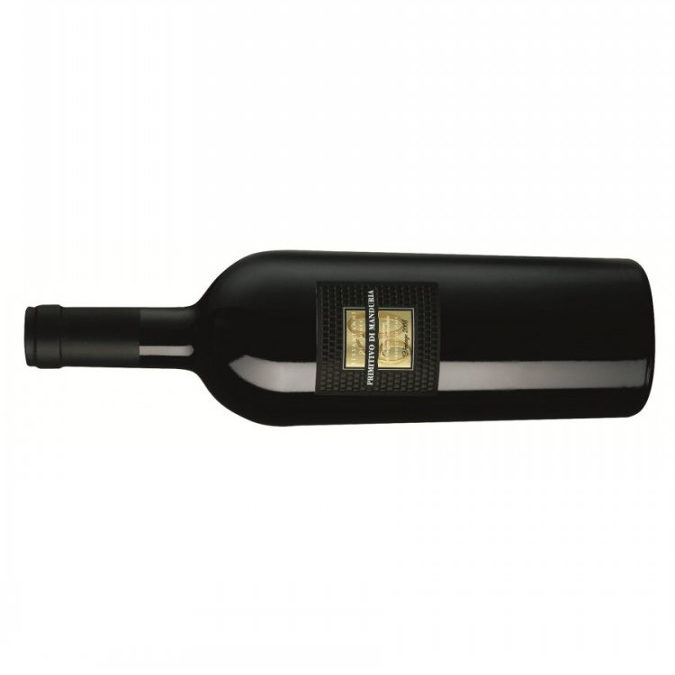Frankreich ist Fussball-Weltmeister geworden – und Kroatien Vize-Weltmeister! Was das mit unserem Feudi di San Marzano aus Apulien, Italien, zu tun hat? Nun: eine ganze Menge. Die Rebsorte Primitivo ist nämlich eine ursprünglich aus Kroatien stammende Rebsorte. Crljenak Kaštelanski heisst sie dort (und Sie werden es wissen: Zinfandel in den USA). Ich finde, Sommer und Weisswein-Wetter hin oder her: Das ist Grund genug, sich den Sessantanni Primitivo 2014 einmal genauer anzuschauen.
Ist Primitivo inzwischen buchstäblich in aller Munde, wissen die wenigsten, dass das bis 1999 fast nicht möglich war. Denn erst in diesem Jahre ist die Önologie-Professorin Carole Meredith im Zuge einer genetischen Untersuchung dahintergekommen, dass Primitivo und Zinfandel identisch sind. Und erst diese „Gleichheit“ führte dazu, den Primitivo an sich wertzuschätzen. Bis dahin wurde der charakterstarke Tropfen stets mit anderen Rebsorten verschnitten und allenfalls in Apulien, am „Stiefelabsatz“, sortenrein ausgebaut und genossen. Nun aber, da Primitivo quasi Zinfandel war? Ein Boom setzte ein, der bis heute ungebrochen ist. Leider führt genau das aber auch zu weniger spannenden Weinen.
Wie der Zinfandel der 1980er und 1990er Jahre, ist Primitivo oft sehr breit, voll, marmeladig fast – und damit frei von Eleganz. Diese Eigenschaften, die ich weniger gerne mag, machen ihn massenkompatibel – für mich aber zu dem Wein, den ich meide wie der Teufel das Weihwasser: Oftmals passt er überhaupt nicht zum Essen, weil er mit seinen Holztönen und seinem Alkoholgehalt von bis zu 15% alles übertüncht, genauso häufig ist man nach ein, zwei Gläsern geradezu „satt“. Nichts gegen körperreiche, wuchtige und alkoholschwere Weine; mit denen bin ich in den 1980er Jahren grossgeworden. Und auch heute noch schätze ich die Weine der damals sogenannten „Toscana-Fraktion“ der Bonner, später dann Berliner Republik: Super-Toscaner oder, nicht minder gut, um es vorsichtig auszudrücken, die „Originale“ aus dem Bordeaux. Wie also soll ein Primitivo schmecken, oder, anders gefragt, wie kann ein Primitivo schmecken?
Dazu muss ich etwas ausholen: Seinen Namen trägt der Primitivo nicht etwa, weil er so einfach, sondern weil er so früh reif ist, „der Erste“ nämlich („primo“ auf italienisch). Er ist also früh gelesen, zudem nach weniger als einem Jahr trinkbar. Und das kennen wir von vergleichbaren anderen „frühreifen“ Weinen auch: sie sind filigran und, nach erstaunlich langen Lagerzeiten, verblüffend komplex – und dabei den grossen Super-Toscanern oder Bordeaux nicht unähnlich. Wenig überraschend, das ein solcher Primitivo kein Massenprodukt sein kann und selbstverständlich, das ein solcher Primitivo auch keines wird: denn die Masse vermisst das Marmeladig-Breite. Ein Primitivo dieser Güteklasse besteht aus händisch gelesenen Trauben alter Reben, was mir wiederum ein, zwei Anmerkungen wert ist.
Alte Reben rücken im Weinbau, noch stärker im Weinmarketing, mehr und mehr in den Mittelpunkt des Interesses. Ahnlich dem geradezu inflationär auftretendem Sommelier in der Gastronomie, ist die „Alte Rebe“ keine geschützte Bezeichnung. Wie der Sommelier, stehen „Alte Reben“ für hohe Qualität, dichtere Aromen, rare und entsprechend teure Weine. Und so tauchen beide Angaben auf den Weinkarten immer häufiger auf. Wende ich mich dem Schindluder, der mit dem Begriff Sommelier getrieben wird, später einmal zu – und bleibe beim Wein: offen bleibt also, was „alt“ genau bedeutet und wann eine Rebe so genannt werden darf. In Deutschland versteht man darunter Weinstöcke, die mindestens 40 Jahre alt sind. Es gibt Weinstöcke, die 80 oder sogar 100 Jahre alt sind – und die gehören erst recht in diese Kategorie. Was den einen vom anderen Rebstock dabei unterscheidet, ist mehr als bloss das Alter. Ab einem Alter von ungefähr 20 Jahren nimmt der Ertrag der Weinstöcke deutlich und kontinuierlich ab, wodurch die Trauben stärker mit Inhaltsstoffen versorgt werden und ein dichteres und vielschichtigeres Aroma aufweisen.Und genau wegen des niedrigen Ertrags und der Seltenheit alter Weinstöcke sind Weine daraus rar und kostspielig.
Und damit komme ich dann doch noch zu unserem Primitivo: Die Königsklasse des Primitivo kommt aus der Gegend von Manduria südöstlich von Tarent. Feudi di San Marzano verfügt dort über 60 Jahre alte Reben, die ausschliesslich für diesen Pracht-Primitivo reserviert sind. Sie stehen auf Terra Rossa-Böden und liefern einen bouquetreichen, gehaltvolldichten, komplexen und geschmeidigen Rotwein mit Noten (ja: Noten! Eine „Note“ macht die Eleganz aus!) von Pflaumen, Kirschen, Waldbeeren, Tabak, Kakao und Vanille. Reifte 12 Monate in französischen Barriques. Kaufen Sie mindestens zwei Flaschen: eine für „jetzt“ – und eine für „in 30 Jahren“. Das meine ich ganz ernst!
https://vinobucks.de/shop/de/rotweine/italien/sessantanni-primitivo-2014-feudi-di-san-marzano.html
Sessantanni Primitivo 2014 – Feudi di San Marzano
France has become world football champion – and Croatia vice-world champion! What does this have to do with our Feudi di San Marzano from Puglia, Italy? Well: a lot. The grape variety Primitivo is originally from Croatia originating grape. Crljenak Kaštelanski is called there (and you will know: Zinfandel in the USA). I think summer and white wine weather or not: That’s reason enough to take a closer look at the Sessantanni Primitivo 2014.
If Primitivo is now literally on everyone’s lips, few people know that this was almost impossible until 1999. It was not until this year that the oenology professor Carole Meredith found out in the course of a genetic examination that Primitivo and Zinfandel are identical. And only this „equality“ led to value the Primitivo in itself. Until then, the characteristic strong drop was always blended with other grape varieties and, if any, in Puglia, the „boot heel“, matured and enjoyed sort of pure. But now that Primitivo was Zinfandel? A boom began, which is unbroken until today. Unfortunately, that leads to less exciting wines.
Like the Zinfandel of the 1980s and 1990s, Primitivo is often very wide, full, jam-fast almost – and thus free of elegance. These qualities, which I like less, make it compatible with the masses – but for me the wine that I avoid like the devil the holy water: Often it does not fit at all to the meal, because with its wood tones and its alcohol content of up to 15% everything is over-painted, as often as one is after one or two glasses almost „full“. Nothing against full-bodied, powerful and alcohol-heavy wines; I grew up with them in the 1980s. And even today I still appreciate the wines of the then so-called „Toscana Group“ of the Bonner, later the Berlin Republic: Super Toscaner or, no less well, to put it mildly, the „originals“ from the Bordeaux. So how should a Primitivo taster, or, in other words, how can a Primitivo taste?
I have to say something about it: the Primitivo does not bear its name because it is so simple, but because it is so early, „the first one“ („primo“ in Italian). He is so early harvested, also drinkable after less than a year. And we know that from comparable other „precocious“ wines too: they are filigree and, after surprisingly long storage times, astonishingly complex – and not unlike the big Super Toscans or Bordeaux. Unsurprisingly, such a primitivo can not be a mass-produced product and, of course, such a primitivo will not, either: the mass misses the jam width. A primitivo of this grade consists of hand-picked grapes from old vines, which in turn is worth a note or two.
Old vines are more and more in the focus of attention in viticulture, even more so in wine marketing. Similar to the almost inflationary sommelier in gastronomy, the „Old Vine“ is not a protected name. Like the sommelier, „Old Vines“ stand for high quality, denser aromas, rare and correspondingly expensive wines. And so both details appear on the wine lists more often. I turn to the Schindluder, who is driven by the term sommelier, later to once – and stay with the wine: so it remains open, what exactly „old“ means and when a vine may be called so. In Germany, this means vines that are at least 40 years old. There are grapevines that are 80 or even 100 years old – and they really belong in this category. What sets one apart from the other is more than just age. From the age of about 20 years, the yield of the grapevines decreases significantly and continuously, providing the grapes with more ingredients and a denser and more complex flavor. And precisely because of the low yield and rarity of old grapevines, wines are scarce and expensive.
And that brings me back to our Primitivo: The premier class of the Primitivo comes from the area of Manduria southeast of Taranto. Feudi di San Marzano has over 60-year-old vines reserved exclusively for this splendid primitivo. They stand on Terra Rossa soils and provide a bouquet-rich, full-bodied, complex and supple red wine with notes (yes: notes! A „touch“ makes the elegance!) Of plums, cherries, wild berries, tobacco, cocoa and vanilla. Matured for 12 months in French oak barrels. Buy at least two bottles: one for „now“ and one for „in 30 years“. I mean that very seriously!
https://vinobucks.de/shop/de/rotweine/italien/sessantanni-primitivo-2014-feudi-di-san-marzano.html

